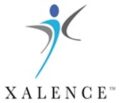
Portfolio Assessment
Organization utilize a diverse set of HR Technology solutions to support their HR process needs. Identifying the applications and deploying them is just the first step in the process. Post the deployment, organizations tend to focus on delivering support to the users, and making changes in accordance with changing business needs. The focus of this support is generally narrowly focused on the application. Portfolio assessments on the other hand, enable organizations to understand the overall health of their HR Technology landscape, and the areas which require attention.
Let Xalence help you determine the health of your HR Technology landscape.
Portfolio Assessment
Foundation
The purpose of the foundation activity is to create the baseline of the current state of the HR Technology Landscape and the expectations of the organization from its HR Technology investments. In addition, the foundation process enables Xalence to create a set of documents that will be maintained on an ongoing basis by the organization to support the periodic assessments.
Assessment
Case Study
About the Organization
A large global organization with a presence in more than 50 countries was looking to understand whether their existing core application supporting the HR processes required attention to continue serving its needs. The organization was supported by a large IT organization which engaged Xalence to study the need and make recommendations on areas of improvement.
Xalence Contribution
- Understand the expectations of the customer from their HR Technology investment in the core application
- Understand the process scope, application capabilities and modifications made to the application
- Understand the challenges posed by the current application
- Identify opportunities for change
- Review of the latest version of the application to identify opportunities for de-customization and hence lower cost of support
- Proposed an upgrade to the latest version with the recommendations for change, areas of de-customization, timeline and plan for the upgrade
